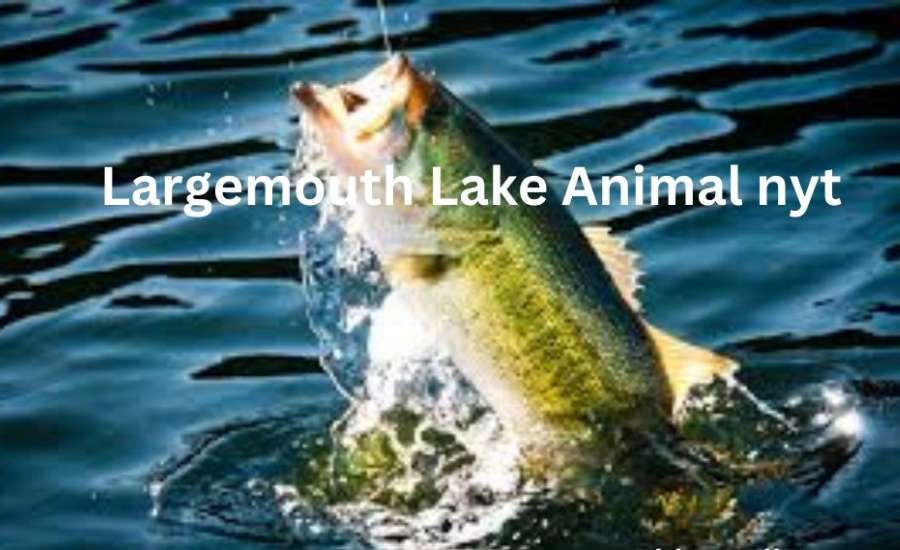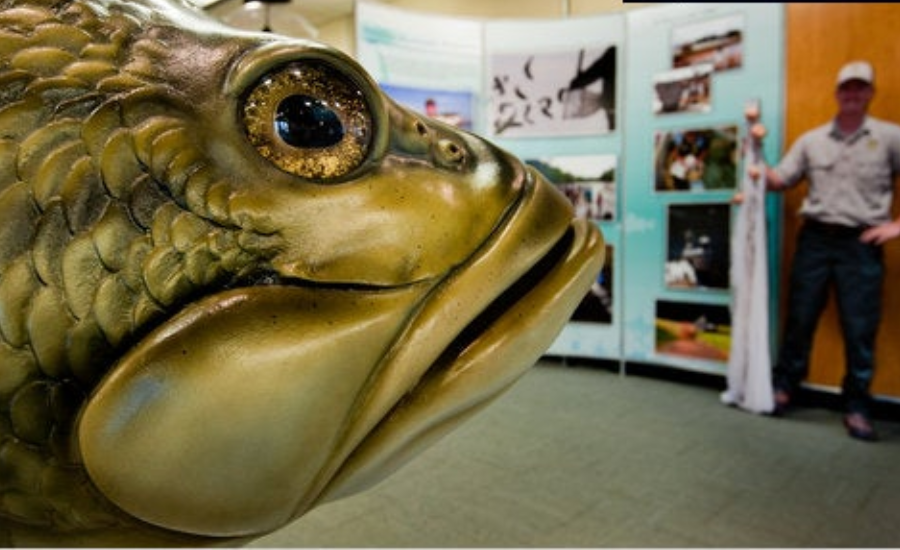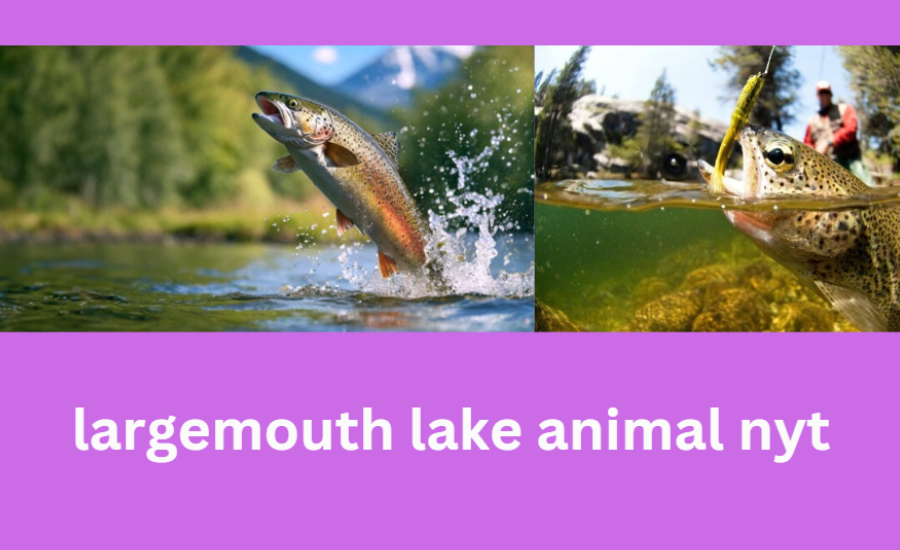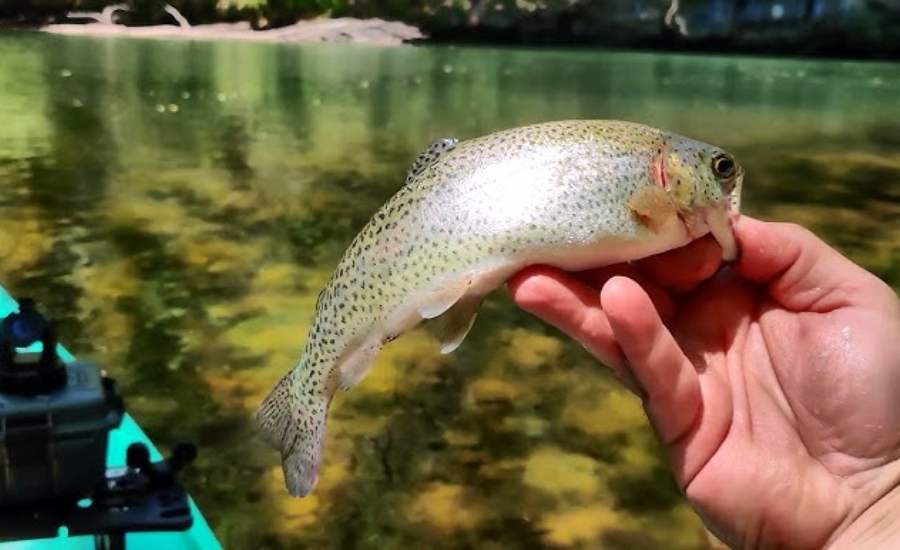An Briefe Overview Of Largemouth Lake Animal NYT

If you’ve been stuck on the New York Times crossword clue related to a “Largemouth Lake Animal,” don’t worry! We’ve pinpointed three possible answers to solve the clue. The most probable answer is “BASS,” which is a four-letter word.
Need a different answer length or letter combination? We’re here to assist you. Just search for your crossword clue, and in no time, you’ll discover various potential solutions. We arrange our answers by rank and letter count, so you can easily determine if it matches your puzzle’s criteria.
No matter if you’re tackling a New York Times crossword, Universal, Daily Themed Crossword, LA Times Daily, or any other puzzle, we’ve got countless crossword answers collected from different sources. Elevate your crossword-solving experience with our easy-to-use clue finder, and explore a vast selection of crossword answers today!
What Is ‘Largemouth Lake Animal Nyt’?
The phrase “Largemouth Lake Animal” doesn’t directly point to a particular species, but it generally hints at a well-known animal that inhabits lakes and is recognized for its size or distinctive characteristics. This term could evoke images of prominent aquatic wildlife that thrive in freshwater environments, such as fish or other lake-dwelling creatures. One example that comes to mind is the largemouth bass, a fish often associated with lakes and known for its impressive size. However, the term could also refer to other sizable animals commonly found in lakes, like turtles, beavers, or even certain types of waterfowl.
In a crossword context, the clue likely alludes to an animal that is notable for its presence in lake habitats, and the solution would fit within the pattern of letters provided by the puzzle. Whether you’re a seasoned crossword enthusiast or a casual solver, understanding this clue requires considering animals that are both iconic and closely tied to lake ecosystems. If you’re searching for a specific answer, focusing on familiar lake animals, especially those that are large or have a noticeable presence, could help you crack the clue.
The Clue: Largemouth Lake Animal NYT

Crossword puzzles provide both a challenge and a source of entertainment for people of all ages. These puzzles often feature clever clues that require creative thinking, and one such clue is “Largemouth Lake Animal” from a New York Times crossword.
Initially, this clue might seem a bit difficult. However, those familiar with freshwater fish will quickly identify the connection. The word “largemouth” specifically refers to a fish species known for its notably wide mouth.
This particular fish is found in lakes across North America and is a familiar sight to anglers and nature enthusiasts. Its popularity as a sport fish further solidifies its recognition, especially among those who enjoy fishing or outdoor activities.
Encountering this interesting clue might evoke memories of peaceful summer days spent by the lake, patiently waiting for that ideal catch to take the bait.
Tips For Solving Nyt Crossword Puzzles
Mastering the New York Times crossword can be both fun and challenging. Here are a few effective techniques to help you improve your ability to solve puzzles:
1. Learn Common Clues and Abbreviations: Getting familiar with frequently used clues and abbreviations can give you a head start. For example, clues that include “Abbr.” usually require a shortened form of a word.
2. Begin with the Easier Clues: Start by solving the clues that come to you right away. Filling in the answers you know will provide you with helpful letters for other, more challenging clues, making the puzzle progressively easier to complete.
3. Use a Pencil or Erasable Pen: It’s a good idea to write your answers lightly until you’re certain. This makes it easier to correct any mistakes without making a mess of your grid.
4. Take Breaks When Needed: If you find yourself stuck, don’t hesitate to take a break. Stepping away for a few minutes can give you a fresh perspective and help you see the answer more clearly when you return.
5. Practice Consistently: Like any skill, the more you practice solving crosswords, the better you’ll become. Over time, you’ll start recognizing patterns and improving your ability to solve even the most challenging puzzles. The key is to enjoy the journey, not just the destination.
By following these tips, you’ll gradually improve your ability to solve even tricky clues like “Largemouth Lake Animal” and find greater satisfaction in completing the puzzles.
Impressive Characteristics Of The Largemouth Lake Animal NYT

The largemouth bass is renowned for its impressive size and striking appearance. These fish can reach lengths of up to 24 inches and are known to weigh more than 15 pounds, making them a formidable presence in freshwater ecosystems. Their distinctive appearance features a greenish hue with dark, irregular patches along their sides, which helps them blend into their aquatic surroundings. What truly sets them apart is their oversized mouth, which extends past their eyes, earning them their name and making them easily recognizable.
Largemouth bass are highly sought after by anglers, not just for their size but also for their fierce demeanor. These fish are known for their aggressive behavior, often putting up a strong fight when hooked. Their powerful, sudden strikes make them a thrilling challenge for sport fishing enthusiasts, who appreciate both the skill required to catch them and the excitement they bring to the experience. Additionally, the largemouth bass’s adaptability to various environments, from lakes and rivers to reservoirs and ponds, further contributes to its popularity among fishermen.
In addition to their physical and behavioral traits, largemouth bass also play a significant role in their ecosystems as apex predators, helping to maintain balance by controlling the populations of smaller fish and invertebrates. This ecological importance, combined with their appeal in sport fishing, makes the largemouth bass a truly remarkable species.
The Cultural Significance Of The largemouth lake animal nyt
In North America, the largemouth bass is more than just a popular game fish; it has deep cultural heritage, particularly within communities dedicated to recreational fishing. Known for its formidable challenge, this fish attracts anglers who appreciate the skill and persistence required to catch it. The pursuit of largemouth bass is a beloved pastime, often leading to spirited competitions where participants vie to land the largest catch.
The largemouth bass has come to represent qualities such as resilience, determination, and expertise. It is not only a symbol of strength but also a test of an angler’s patience and technique. Many who engage in bass fishing view it as a way to connect with nature, hone their skills, and engage in friendly competition. Tournaments centered around catching the biggest largemouth bass have become significant events, bringing together fishing enthusiasts from all over to celebrate their shared passion.
Beyond its role in sport, the largemouth bass also holds a place in the broader cultural landscape. It is often seen as a symbol of the outdoor lifestyle, representing a connection to the water and the thrill of the catch. For many, it embodies the spirit of adventure and the satisfaction that comes from mastering a challenging pursuit. Whether admired for its tenacity in the water or its symbolic meaning on land, the largemouth bass continues to be an iconic figure in North American fishing culture.
Exploring The Mystery Of ‘Largemouth Lake Animal NYT

The phrase “largemouth lake animal” is most commonly associated with the largemouth bass, a well-known fish species that inhabits freshwater lakes and rivers. However, this term could also evoke images of mysterious or mythical creatures believed to dwell in lakes. Throughout history, many cultures have shared tales of enigmatic lake creatures, often sparking curiosity and wonder. These legendary beings, often described as large and elusive, have been the subject of countless stories and folklore, capturing the imaginations of people around the world.
One of the most famous examples is the Loch Ness Monster, a legendary creature said to inhabit Scotland’s Loch Ness. This mysterious “lake animal” has inspired numerous sightings and investigations, yet remains unproven, fueling both skepticism and fascination. Similarly, North American folklore includes tales of lake monsters like Champ, said to reside in Lake Champlain, and Ogopogo, believed to inhabit Okanagan Lake in Canada. These stories often describe large, serpent-like creatures that lurk beneath the water’s surface, adding a sense of mystery and fear to the lakes they supposedly inhabit.
The concept of a “largemouth lake animal” could also extend to actual large aquatic species that are less well-known or understood, contributing to the mystique of certain lakes. Whether rooted in reality or born from myth, the idea of a mysterious lake creature continues to captivate people’s imaginations, blending natural history with the allure of the unknown. The exploration of these tales and the ongoing search for evidence of such creatures demonstrate the enduring human fascination with the mysteries of the deep.
Ecological Significance Of The Largemouth Lake Animal NYT
The ecological significance of the largemouth bass, often referred to as a “largemouth lake animal,” is profound in freshwater ecosystems. As apex predators, largemouth bass play a crucial role in maintaining ecological balance by controlling the populations of smaller fish and invertebrates. By preventing any one species from becoming overly dominant, they help sustain the health and diversity of aquatic habitats. This balance is essential for the well-being of other organisms, including aquatic plants and wildlife that depend on these environments.
In recent studies, the largemouth bass has been recognized as an indicator species, meaning that its presence and overall health can offer valuable insights into the state of freshwater ecosystems. Scientists monitor largemouth bass populations to assess the effects of environmental changes, such as pollution or climate shifts. This information is vital for guiding conservation strategies and ensuring that freshwater habitats remain viable for all species that depend on them.
For environmental advocates, the largemouth bass has become a symbol of the broader environmental challenges facing freshwater ecosystems. Issues such as water pollution, habitat loss, and climate change are all factors that threaten these environments. Conservationists stress the importance of sustainable water management practices and the protection of critical habitats to ensure that largemouth bass and other aquatic species can continue to thrive.
Impact of Human Activities Of Largemouth Lake Animal NYT

Human activities have a significant influence on the largemouth bass and its habitat. Agricultural practices, urban expansion, and recreational fishing can all lead to negative impacts. For example, the runoff from pesticides and fertilizers used in farming can cause harmful algal blooms in lakes and rivers, which deteriorates water quality and disrupts the food chain, ultimately affecting largemouth bass populations. Additionally, the destruction of natural habitats due to construction and land development can further strain these ecosystems.
Recreational fishing, while a popular activity, also poses challenges to the sustainability of largemouth bass populations. Overfishing, along with the introduction of non-native species, can disrupt the delicate balance of local ecosystems. To mitigate these effects, anglers are encouraged to practice sustainable fishing techniques, such as catch-and-release, to help preserve largemouth bass numbers and support the health of aquatic ecosystems.
Collaboration between environmental organizations and policymakers is critical in addressing these issues. Through the implementation of protective measures, public education campaigns, and habitat restoration projects, the goal is to safeguard freshwater environments and ensure that they remain vibrant and healthy.
Conservation Efforts And Initiatives
Conservation efforts to protect largemouth bass and their habitats are widespread. Various organizations, such as local wildlife agencies and global groups like the World Wildlife Fund, work together to promote sustainable practices and defend key ecosystems. These conservation programs often involve efforts to restore degraded habitats, reduce pollution, and engage local communities in conservation activities.
One innovative conservation strategy is the involvement of citizen scientists—individuals who help collect data and monitor environmental conditions. This approach not only aids researchers by providing valuable information but also fosters a sense of responsibility and connection to the natural world among participants.
Supporting conservation initiatives is crucial for the long-term survival of the largemouth bass and the ecosystems they inhabit. Whether through donations, volunteer work, or advocacy, individual contributions can make a difference in preserving these essential freshwater habitats for future generations.
Connecting With Nature Enthusiasts

For nature lovers, the attraction of the largemouth bass goes beyond just its role in maintaining ecological balance. It offers a gateway to connecting with the natural world and appreciating the intricacies of freshwater ecosystems. Observing largemouth bass in their natural habitat or exploring the surrounding wildlife and plants provides a unique and rewarding experience. These encounters allow enthusiasts to immerse themselves in the beauty and complexity of nature, fostering a deeper appreciation for the environment.
Engaging with a community of like-minded individuals can enhance this experience. By joining local nature groups, attending educational workshops, or participating in guided tours, enthusiasts can gain knowledge from experts and share their passion with others who share similar interests. These activities not only deepen their understanding of freshwater ecosystems but also strengthen their connection to the natural world.
Building a community around this shared interest can have a powerful impact. Nature enthusiasts who come together can advocate for the protection and preservation of freshwater habitats and the species that call them home. This collective passion for nature can drive meaningful change and contribute to conservation efforts.
The Largemouth Bass And Environmental Advocacy
For those involved in environmental activism, the largemouth bass serves as a potent symbol of the larger environmental issues facing freshwater ecosystems. Its prominence in discussions and media highlights the urgent need for sustainable practices and habitat conservation.
Activists can harness the popularity of the largemouth bass to raise public awareness and inspire action. By focusing on the challenges posed by pollution, climate change, and habitat destruction, campaigns can galvanize public support and push for policy changes. Emphasizing the interconnectedness of these environmental issues can help people understand the critical importance of protecting freshwater ecosystems.
Collaboration is key in addressing these complex challenges. When activists, scientists, and policymakers work together, they can develop comprehensive strategies to safeguard freshwater habitats and ensure a sustainable future for largemouth bass and other aquatic species. By joining forces, they can create lasting positive change for the environment.
You may also read: Tjmv106
FAQs
1. What is the ecological significance of the largemouth bass?
The largemouth bass plays a crucial role in maintaining the ecological balance of freshwater ecosystems. As an apex predator, it helps regulate populations of smaller fish and invertebrates, ensuring that no single species dominates the environment. This balance is essential for the health of aquatic plants and other organisms in these habitats.
2. How does the largemouth bass serve as an indicator species?
The largemouth bass is considered an indicator species because its presence and health provide insights into the overall condition of freshwater ecosystems. Monitoring largemouth bass populations helps scientists assess the impacts of environmental changes and informs conservation efforts.
3. What are the main threats to largemouth bass and their habitats?
Human activities, such as pollution from agriculture and urban development, as well as habitat destruction, are significant threats to largemouth bass. Recreational fishing, particularly overfishing and the introduction of non-native species, also poses challenges to their populations.
4. How can individuals contribute to the conservation of largemouth bass?
Individuals can support largemouth bass conservation by practicing sustainable fishing techniques, such as catch-and-release, and by participating in or supporting habitat restoration projects. Engaging in community efforts and raising awareness about freshwater conservation can also make a difference.
5. Why is the largemouth bass significant for nature enthusiasts and environmental activists?
For nature enthusiasts, the largemouth bass offers a connection to the natural world and an opportunity to appreciate the beauty of freshwater ecosystems. For environmental activists, the largemouth bass symbolizes the broader challenges facing these environments, and its popularity can be leveraged to raise awareness and drive action for conservation efforts.
Conclusion
The largemouth bass holds a vital place in both the ecological health of freshwater ecosystems and the cultural fabric of fishing communities. Its role as an apex predator ensures a balanced ecosystem, while its status as an indicator species helps monitor the overall health of these habitats. However, human activities pose significant threats to the largemouth bass, making conservation efforts essential. By practicing sustainable habits, supporting conservation initiatives, and fostering a community of nature enthusiasts and environmental advocates, we can protect the largemouth bass and ensure the preservation of freshwater ecosystems for future generations.
Stay in touch with us for more updates and alerts! Discoverfuns







